What are the best types of dog ears?
Some types of dog ears allow for better hearing than others, and — on the flip side — some breeds have ears that are more susceptible to infection. But otherwise, we think all types of dog ears are great — every size and shape!
The 12 Different Types of Dog Ears
Below, we’ll dive in and take a look at 12 different kinds of canine ears. If you’ve spotted a different type or we’ve missed your favourite one, let us know in the comments!
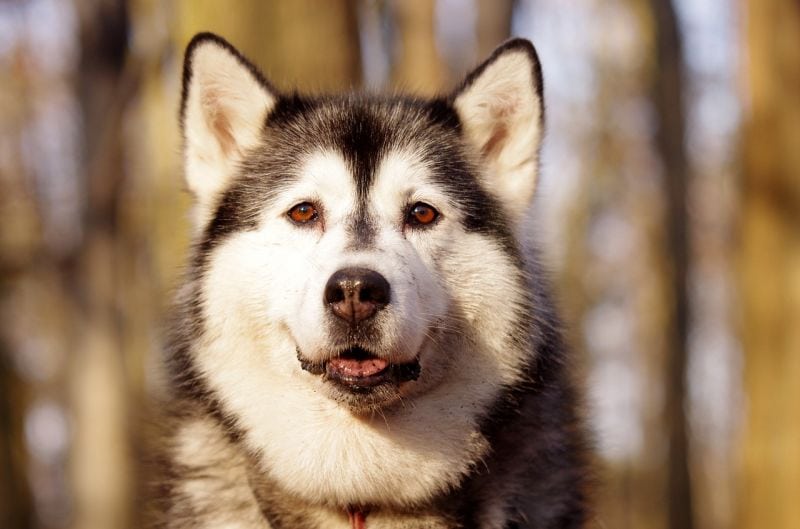
Prick ears are also known as “erect” ears, as they stand fully upright. They tend to appear pointed, and give dogs an alert appearance. They are most commonly found in cold weather breeds such as the Siberian husky or the Alaskan malamute.
Prick ears are similar to the ancestral ear shape wolves have, so they’re pretty common. In addition to huskies and malamutes, they’re also found in terrier breeds like the Cairn or the West Highland, as well as various terrier mixes. You may also spot them on a Podengo.

The candle flame ear is a shape exclusive to the English toy terrier. In terms of shape, they are pretty similar to prick ears. However, candle flame ears curve slightly inward at the base and feature small indents on the outer edge (similar to that of a flame).
The candle flame ear is also named for its color though, as it has lighter colored fur on the inside, much like a candle flame!

The blunt-tipped ear was developed by breeders from the prick ear shape. French bulldogs and chow chows are two of the best examples of breeds with blunt-tipped ears.
In fact, these ears look pretty similar to prick ears, but they have one key difference: Like the prick ear, the blunt-tipped ear is upright, but instead of a sharp point, it features a smooth curve at the apex.

Not dissimilar from the prick or blunt-tipped ear, bat ears are upright, and they angle outward a bit, causing them to extend beyond the sides of the face. This makes them look somewhat like bat wings.
Bat ears are often larger in proportion to the dog’s head than the ears of some other dogs. This not only gives these dogs great hearing, but it also means they can cool off a bit more quickly when hot.
Look no further than Her Majesty’s Corgis for the most regal example of a bat ear. Some corgi mixes may also sport bat ears.

A variant of the prick ear, the hooded ear curves inwards slightly. Imagine someone wearing a hoodie — the fabric on either side of the wearer’s face is exactly how this ear is shaped!
Hooded ears aren’t terribly common, but for a visual example, check out the basenji (pictured above) — a dog breed famous for not barking very much at all.

Neither pendant nor erect, the cocked ear is an upright ear with a slight bend in the top of the pinna. Also called semi-erect ears, dogs with these kinds of ears have exposed ear canals (unlike dogs with button ears, which we’ll cover next).
Border collies are the prime example of a cocked-ear breed, but these cute ears can also be seen in some border collie mixes, pit bull type dogs and a few other breeds.
Like pricked ears, cocked ears are great for dogs who need to remain alert and listen for soft sounds.

The base of a button ear is erect, but the pinna folds over, much like it does in cocked ears. However, you can distinguish them from cocked ears by noting the extent of folding — button ears usually have enough of a fold to cover the ear canal.
The name for these cute-as-a-button ears was derived from the flap of a pocket on a button down shirt. The best examples of a button ear are on the Jack Russell terrier or the fox terrier.
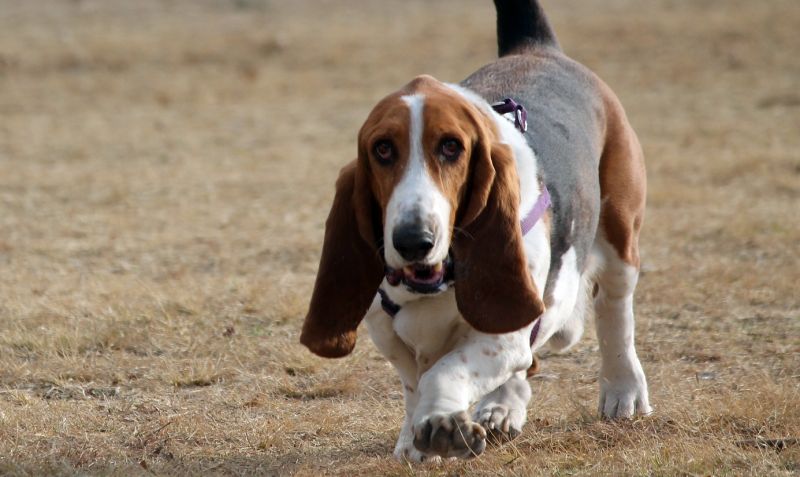
Also known as lop or pendant ears, drop ears hang down from the head instead of being upright at the base. Drop ears come in a large range of shapes and sizes, but the ultimate example can be found on our friend the basset hound!
Because these ears are so long, they can get in the way a bit at times. So, look for relatively narrow food and water dishes if your drop-eared pooch has really long ears.

If your dog’s ears don’t smell like roses, they may be due for a cleaning! Jokes aside, rose ears get their name from the way the canal is exposed and the ear folds out and over to the side, creating similar shapes to that of the centre of a rose.
Not that the greyhound or whippet needed any help being elegant, but they’re the best examples of dogs with rose ears.
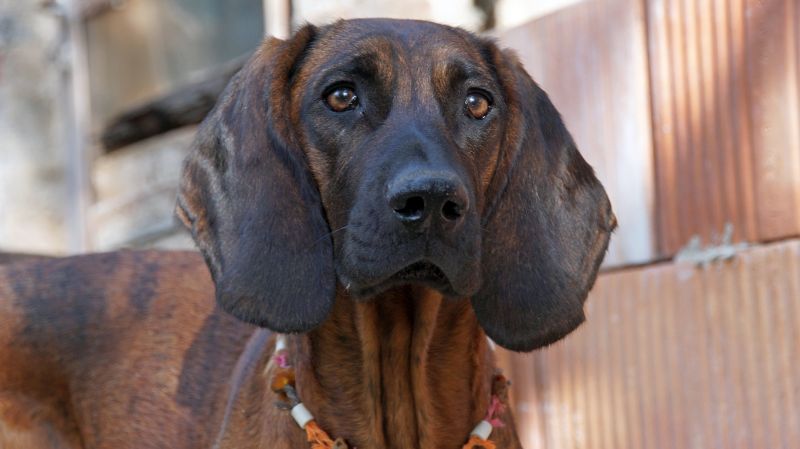
The best way of visualizing folded ears is to imagine curtains — structured at the top, and then gracefully hanging down.
Folded ears are somewhat similar to drop ears, but whereas a basset hound’s drop ears appear totally flat, the ears of a field spaniel or bloodhound extend away from the face first and then fold down.
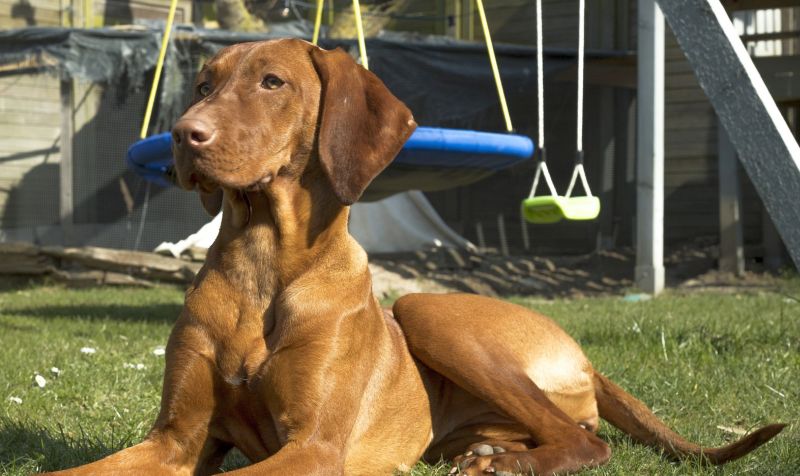
I feel like if you were asked to draw a dog in Pictionary, you’d probably default to one with a V-shaped ear! The pinna of a V-shaped ear is flat and folds forward into a triangular shape with soft corners.
Great examples of dogs with V-shaped ears include Labrador retrievers, retriever mixes, and vizslas. V-shaped ears are pretty similar-looking to folded ears, but just note the shape at the bottom to distinguish between the two.
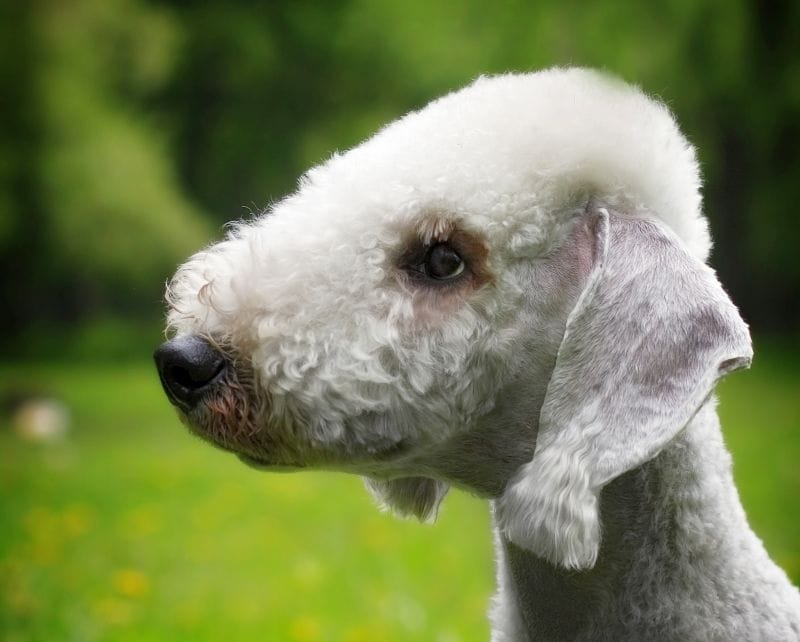
Named after a filbert tree, the shape of the filbert ear is said to resemble that of a leaf, but it’s actually named after the appearance of the tree’s fruit.
Exclusive to the Bedlington terrier, filbert ears are V-shaped, but then they taper off into an area of fur that almost looks like a pom pom — or the hazelnuts on a Filbert tree!

No matter what shape your dog’s ears are, they will require regular ear cleaning care. Ear infections are common amongst all breeds but fear not — they are often easy to prevent!
Here’s a few ways to care for your doggo’s ears:
Ear cropping (also known as cosmetic otoplasty) involves removing all or part of the pinna surgically and then bracing or taping the remainder of the ear to retrain the cartilage to stand upright.
The procedure (where permitted legally) is performed on puppies at 7 to 12 weeks of age, and it is most commonly seen in breeds like the American pit bull terrier and the Doberman.
Ear cropping was first used due to the belief that it would decrease aural health problems. However, this is a myth that has since been widely debunked and has no clinical evidence to support it.
This means that ear-cropping is a purely cosmetic procedure, which is currently falling out of favor among most owners, vets, and some breed registries.
In fact, while recognized by the AKC as a traditional practice among certain breeds, ear cropping is a controversial procedure and many veterinarians will refuse to perform it.
In many parts of the world ear cropping is illegal as it causes a lot of postoperative pain and trauma in puppies for no medical benefit whatsoever.
Rounded or Blunt Ears
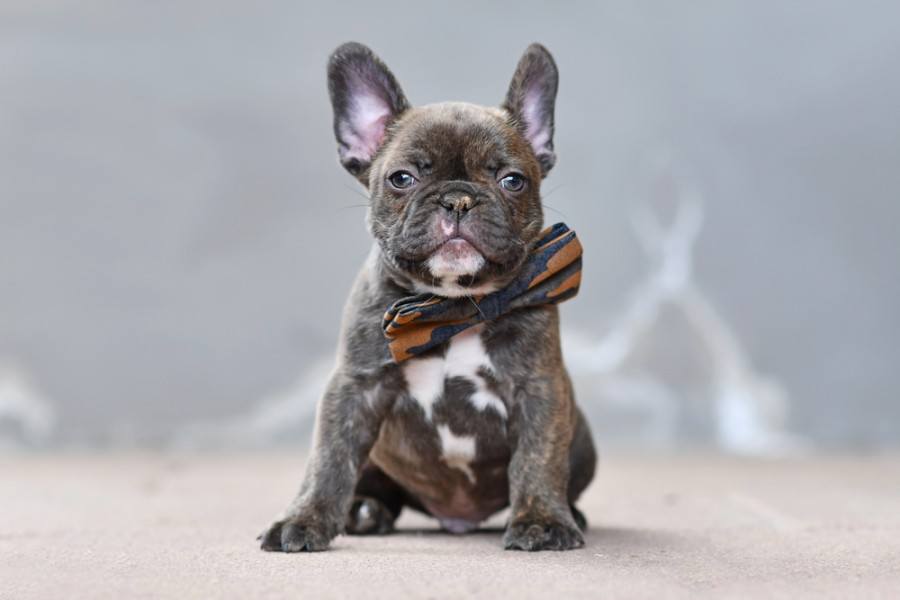
Dog breeders have been able to modify the pricked ears of the wolf through selective breeding. This has resulted in an upright ear with a curved tip. This ear type can be found on French Bulldogs.

As the name implies, bat ears are large, V-shaped ears that resemble those of a bat. They are often outwardly inclined and extend beyond the sides of the dog’s head. Breeds with this type of ear design include the Chihuahua and the Corgi.

Rose dog ears are erect ears that fall to the side at the midway point and resemble a rose petal. The American Kennel Club has strict breed standards in place for dogs with this ear type. For example, Whippets must have a small, refined rose ear shape while they are relaxed.

In the dog world, there are numerous variations of erect ears, including the hooded ear. This elegant variation, which is on the Basenji, features curled sides to give off the appearance of a cowl.
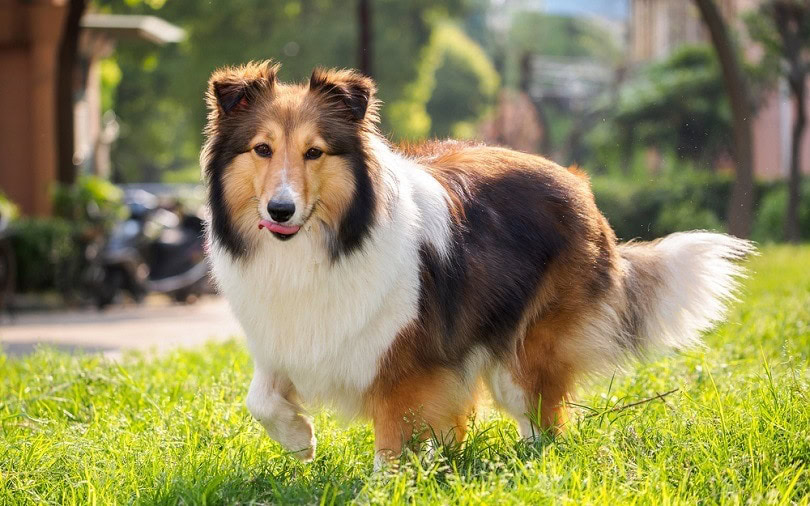
Pooches that have rigid ears that flop over at the tip are considered to have semi-pricked ears. Common breeds with this ear type include Collies, Fox Terriers, and Shetland Sheepdogs.
The American Kennel Club (AKC) has breed standards that state that Border Collies can either have pricked or semi-pricked ears. If they are semi-erect, the ears must fold forwards or outwards.
Why dogs have Pricked ears?
Have you ever wondered why basset hounds, spaniels, and bloodhounds have long, droopy ears? Or why the pit bull, cane corso, and Doberman pinscher have cropped ears? The answers might surprise you as there are several types of dog ears that all serve different purposes. Humans have experimented with crossbreeding dog breeds for years to create the perfect hunting dog, guard dog, companion, herding dog, and more! These experiments have resulted in varied species with different coat colors, body sizes, traits, and even ear shapes.
So, if you want to know why your dog has button, prick, rose, or V-shaped ears, continue reading about the ten types of dog ears and why they are important.
Pricked ears usually stand at attention, pointing upwards. These erect types of dog ears are generally seen on wolf-like dogs such as Siberian huskies, German shepherds, Alaskan Malamutes, Samoyeds, and Belgian Malinios. However, smaller dog breeds like the Norwich terrier, Yorkshire terrier, and West Highland white terrier also have pricked ears.